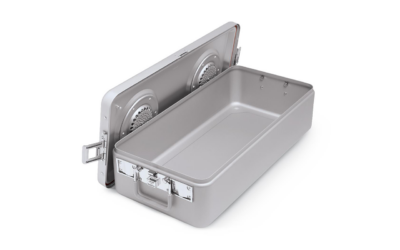By Lanier Norville
Surgical gloves may be disposable, but in the operating room they are indispensible. Despite lingering effects of a down economy and declining medical equipment and supply sales, the market for surgical gloves continues to grow.
“Deceptively simple looking” according to Global Industry Analysts (GIA), today’s surgical gloves boast advanced manufacturing processes, such as hand-shaped molds to increase comfort and chemically-produced allergy-resistant latex alternatives. Some manufacturers are researching the potential of antimicrobial properties. GIA expects the disposable gloves market to reach $1.38 billion by 2015, driven primarily by powder-free latex gloves, a segment that will grow 8.3 percent annually. Of all disposable medical gloves, surgical gloves are in the highest demand.
Unlike the broad and fragmented examination gloves market, the surgical gloves market is dominated by only a handful of players, GIA reports, due to “the relatively complex and capital-intensive manufacturing technologies required by surgical gloves,” according to the report. Paul Bottcher, president of Medline Industries, Inc’s surgical gloves division, says, “The requirements the FDA puts forth for surgical gloves are more stringent than for the everyday examination glove, so you find that there are fewer capable factories out there.”
Historically, surgeons and nurses have preferred latex to synthetic alternatives because of its touch sensitivity, which allows them to maintain dexterity during delicate surgical procedures. But as latex allergies continue to drive demand and more facilities go latex-free, manufacturers have taken initiative to produce comparable synthetic alternatives.
In an independent 2007 Association of Perioperative Registered Nurses (AORN) and Medline survey, 76 percent of respondents preferred Medline’s polyisoprene glove Sensicare over a comparable latex glove. Polyisoprene is considered superior to neoprene, the other common latex alternative, because it has touch sensitivity and flexibility similar to latex, while neoprene tends to be thicker, resulting in reduced sensation in the wearer’s hands. However, the cost of manufacturing polyisoprene, a synthetic chemical compound, is higher than the cost of processing natural rubber latex.
But it’s not just cost that has some operating rooms resisting the switch. Gloves are a highly personal product – an essential part of working in the OR, and part of daily apparel, which makes it harder to switch brands than it would be for another product, Bottcher explains.
But he says the industry is moving toward latex-free alternatives. “Today, 75 percent of OR units are still latex. My estimation is in the next seven to 10 years, we’re going to see a significant flip in the usage,” to polyisoprene gloves. Medline still offers both powdered and powder-free latex gloves, though the company is focusing its efforts on polyisoprene.
Part of the challenge is simply education, Bottcher says. Neoprene was the first latex-free alternative introduced into the market, and because of its physical property limitations, OR personnel still tend to believe that there is no good latex-free alternative. That makes it difficult for a facility to convince their staff and surgeons that going 100 percent latex-free is possible, he says. Although polyisoprene is two to three times the cost of latex, Bottcher predicts cost will prove less limiting as it will decrease over time as demand for high-quality synthetic alternatives rises.









